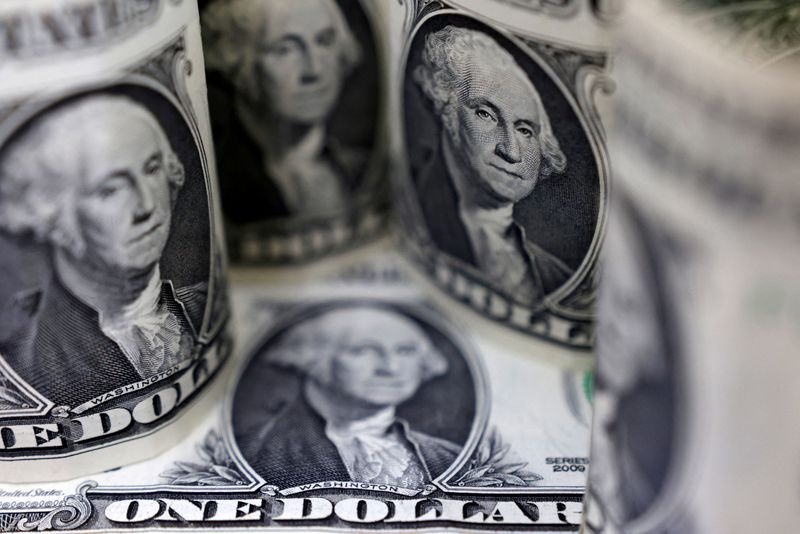By Hari Kishan
BENGALURU (Reuters) - The U.S. dollar's recent slide appears to be short-lived as some speculators have already reduced bets for aggressive Federal Reserve interest rate cuts this year, according to a Reuters poll of strategists who still say it will be weaker in a year.
Market expectations that the Fed will start easing policy as early as March were tempered when minutes from December's policy meeting showed most policymakers agreed borrowing costs need to remain high for some time, suggesting a March cut is less likely.
After the release, the dollar rose against a basket of currencies and is already up around 1% for the year following a 5% dip in the previous two months.
Interest rate futures on Wednesday were pricing in a roughly 66% chance the Fed starts cutting in March, down from 87% a week ago, according to CME FedWatch. Any further pullback in bets is likely to give the currency a leg up in the near term.
"In the short run, we think the dollar could gain a bit, mainly because we think the market is being too aggressive at pricing in Fed rate cuts...our base case is the Fed will wait until May before cutting," said Brian Rose, senior economist at UBS Global Wealth Management.
"We have seen the dollar rebounding a bit in recent days and the dollar could be stable or maybe a bit higher in the near term."
Making clear the dollar has not yet been decisively knocked off its perch, a majority of analysts, 36 of 59, said the greater risk to their three-month forecast was the dollar trades stronger against major currencies than they currently predict. The remaining 23 said the risk was it could trade weaker.
However, most said the dollar will slip against major currencies in 12 months as the Fed's latest dot plot predictions show three interest rate cuts by year-end.
"Beyond the very short term, we still expect a further dollar decline to materialise this year as the deterioration in the economic outlook forces (a) large (amount of) Fed cuts," said Francesco Pesole, FX strategist at ING.
But any depreciation in the first half of this year will be moderate compared with the last couple of months, he said.
The euro, which rose over 3% last year, its first yearly gain since 2020, was expected to capitalise on narrowing interest rate differentials and rise over 2% to trade around $1.12 in 12 months. It was trading at $1.09 on Thursday.
Among other major currencies, the Japanese yen, which has dropped about 30% in the past three years, was forecast to gain 6.6% to change hands at around 135/dollar in a year.

Sterling, which had a strong showing last year, gaining over 5.0%, was predicted to rise over 1.5% to $1.29 by year end. The Aussie and New Zealand dollars were expected to strengthen around 4% and 2.2%, respectively.
(For other stories from the January Reuters foreign exchange poll:)